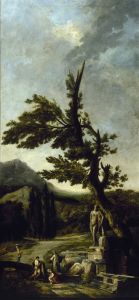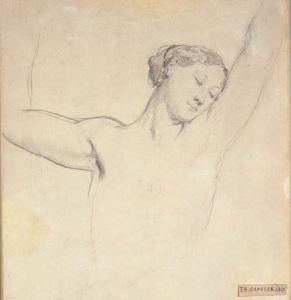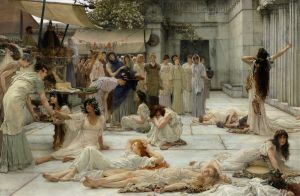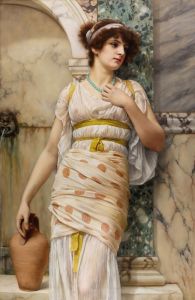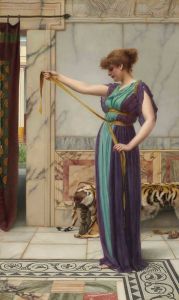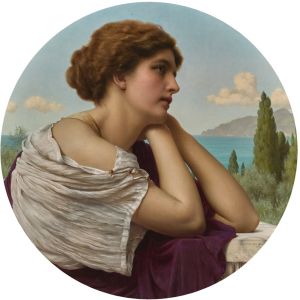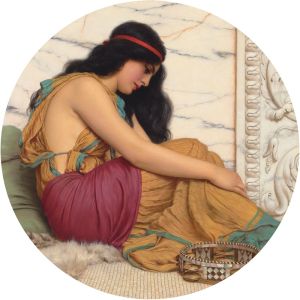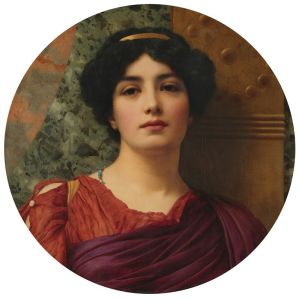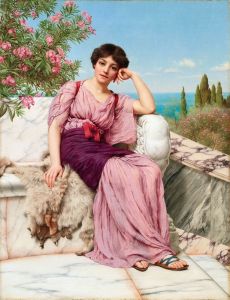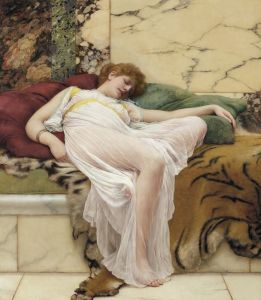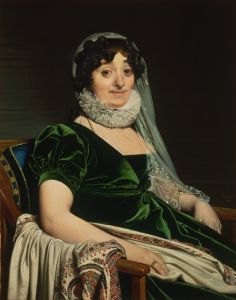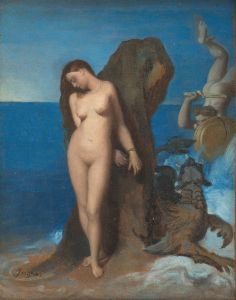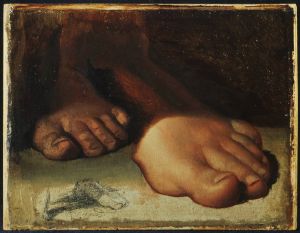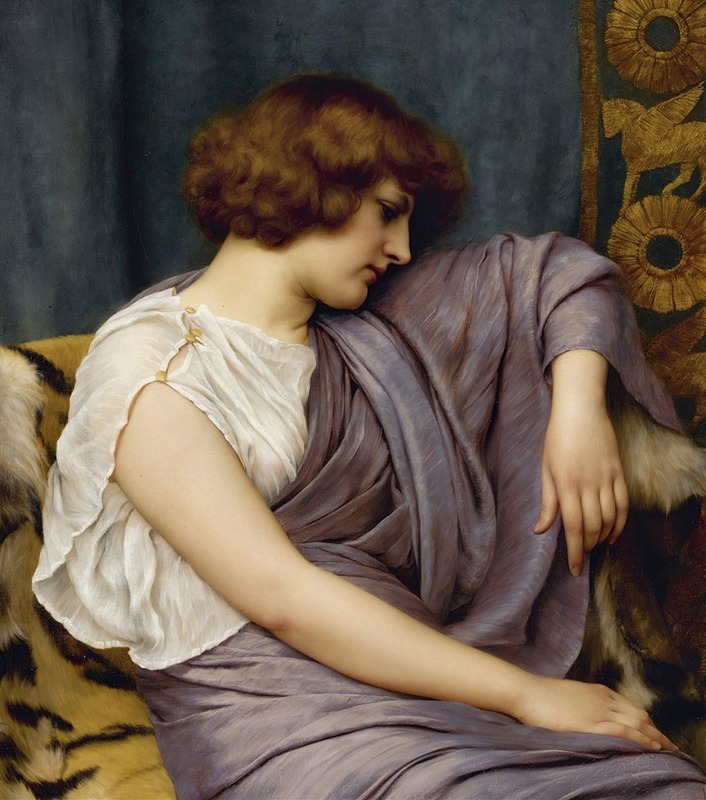
Briseis
A hand-painted replica of John William Godward’s masterpiece Briseis, meticulously crafted by professional artists to capture the true essence of the original. Each piece is created with museum-quality canvas and rare mineral pigments, carefully painted by experienced artists with delicate brushstrokes and rich, layered colors to perfectly recreate the texture of the original artwork. Unlike machine-printed reproductions, this hand-painted version brings the painting to life, infused with the artist’s emotions and skill in every stroke. Whether for personal collection or home decoration, it instantly elevates the artistic atmosphere of any space.
John William Godward was a British painter associated with the Neo-Classicist movement, known for his depictions of women in classical settings. One of his works, "Briseis," exemplifies his style and thematic focus. Godward's paintings often reflect a fascination with the ancient world, characterized by meticulous attention to detail and vibrant use of color.
"Briseis" is a painting that draws inspiration from classical antiquity, a common theme in Godward's oeuvre. The subject, Briseis, is a figure from Greek mythology, known primarily from Homer's epic poem, the "Iliad." In the narrative, Briseis is a Trojan woman captured by the Greeks during the Trojan War and becomes a concubine to Achilles, the Greek hero. Her story is central to the plot of the "Iliad," as her capture and subsequent dispute between Achilles and Agamemnon, the leader of the Greek forces, lead to significant conflict within the Greek camp.
Godward's portrayal of Briseis likely reflects his interest in the romantic and dramatic elements of classical stories. His work often features women in serene, contemplative poses, set against backgrounds that evoke the grandeur and elegance of ancient Rome or Greece. The artist's attention to detail is evident in the intricate patterns of the fabrics, the realistic rendering of textures, and the harmonious composition of colors.
While specific details about the painting "Briseis" by Godward, such as its creation date or current location, are not widely documented, it fits within the broader context of his artistic career. Godward was active during the late 19th and early 20th centuries, a period when there was a resurgence of interest in classical themes in art. This movement, known as Neoclassicism, sought to revive the ideals of beauty and harmony associated with ancient art.
Godward's work, including "Briseis," is often compared to that of his contemporaries, such as Sir Lawrence Alma-Tadema and Frederic Leighton, who also explored classical themes. However, Godward's paintings are distinguished by their intimate scale and focus on the individual, often solitary, female figure. His use of light and shadow, combined with a soft, almost photographic realism, creates a sense of timelessness and tranquility.
Despite his success during his lifetime, Godward's work fell out of favor in the years following his death in 1922, as modernist movements began to dominate the art world. However, there has been a renewed interest in his paintings in recent decades, with collectors and art historians recognizing the technical skill and aesthetic appeal of his work.
In conclusion, "Briseis" by John William Godward is a testament to the artist's skill in capturing the beauty and elegance of classical antiquity. Through his meticulous technique and romantic vision, Godward brings to life the mythological figure of Briseis, offering viewers a glimpse into a world of ancient splendor and timeless beauty.





